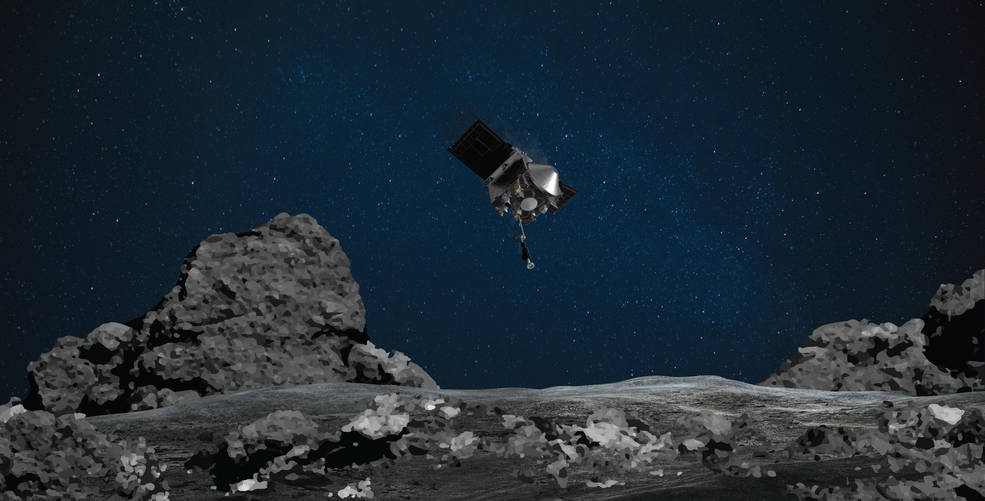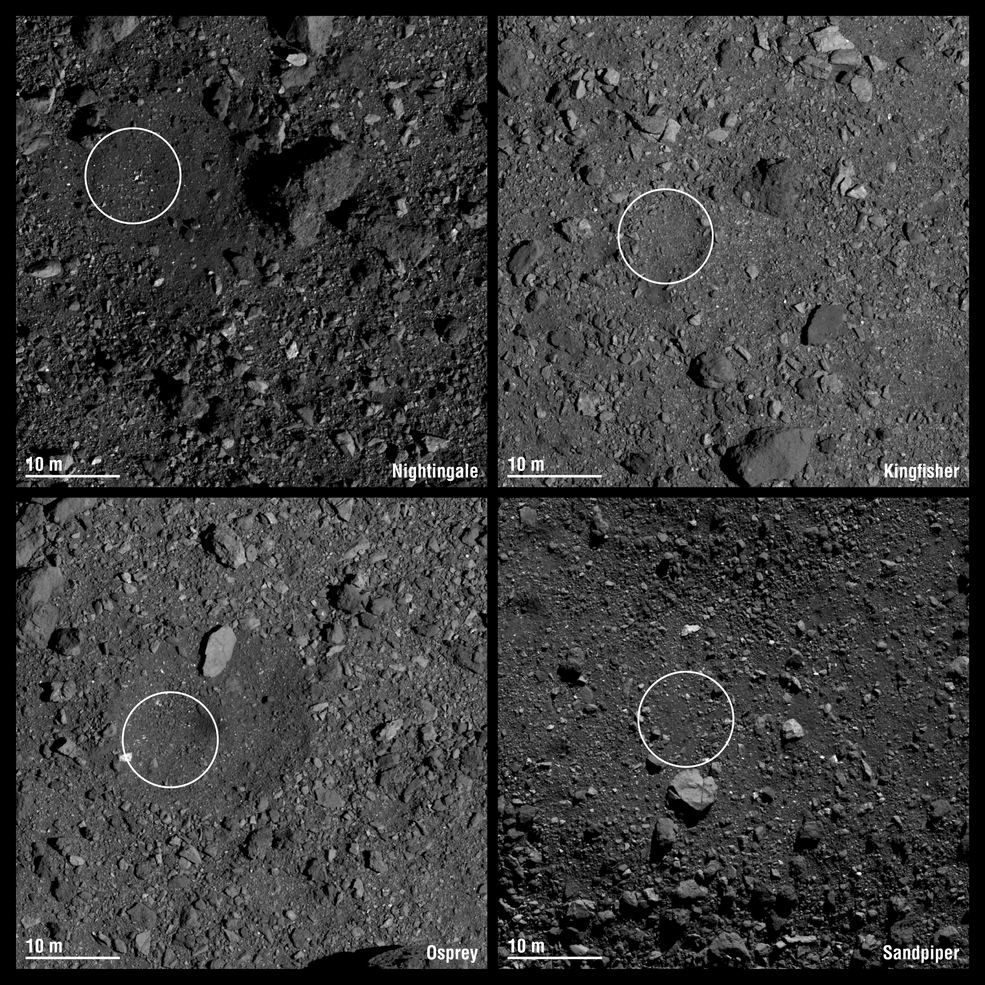The asteroid belt is a chaotic place. Things smash into each other, get thrown into completely different orbital planes, and are occasionally visited by small electronic spacecraft launched by humans. All three things seem to have happened to the asteroid Bennu, which is currently being orbited by OSIRIS-REx, a mission launched by NASA in 2016.
The most recently released results from the mission show that Bennu might have small pieces of Vesta on it. Given that Vesta is one of the biggest asteroid belt objects and Bennu is a near Earth asteroid millions of kilometers away from the asteroid belt, this hints at a pretty exciting past history for the asteroid currently being visited by NASA’s first asteroid sample return mission.

Credit: NASA/Goddard/University of Arizona
The new data were published by the Lunar & Planetary Laboratory in the journal Nature Astronomy. Lead author Daniella DellaGiustina, the Imaging Processing Lead Scientist on OSIRIS-REx, points out that there are some boulders ranging from 1.5 to 4.3m (5 to 14 ft) that are up to 10 times brighter than others on the surface of Bennu.
After first seeing these boulders on images captured in the spring of 2019, the imaging team turned their attention to another of the spacecraft’s instruments – the OSIRIS-REx Visible and Infrared Spectrometer (OVIRS). Spectrometers are great for understanding the composition of materials, and this case was no exception – they found the brightly colored rocks were most likely made of pyroxene, which is what Vesta is made out of. It’s also the material that comprises most of the “vestoids”, which are smaller asteroids that formed after other asteroids collided with Vesta and knocked chunks off of it.
Credit: NASA Goddard Space Flight Center
There are of course other sources of pyroxene in the solar system. However, the mission scientists have suggested that the formation of the material was local to Bennu. Pyroxene normally forms under extremely high temperatures. However, most of the material on Bennu has water in it, and any such heating event would have liquidated that material. Impacts large and hot enough to create pyroxene would also have destroyed the structure of the asteroid itself.
Through that process of elimination, it seems likely that the pyroxene boulders were deposited on the surface of Bennu by implanting themselves in the body of the asteroid, or of the parent body where Bennu itself came from. Studies of Bennu and it’s orbit point to it previously being a Main Belt asteroid. Two asteroid families, Polana and Eulalia, are likely potential candidates for Bennu’s parent object, as they have similar compositions. Most likely Bennu then followed a gravitational pathway that put it in near Earth orbit, rather than staying stationary in the asteroid belt.

Credit: NASA / University of Arizona
If it had stayed in the asteroid belt, it might have collected more types of material from other asteroids. Other spacecraft visiting asteroids, such as Dawn (Vesta), Hayabusa (Itokawa), and Hayabusa2 (Ryugu) have noted the presence of seemingly foreign objects on the surfaces of their target asteroids. With the mounting evidence of continual aggregation of pieces of other asteroids, the science team studying Bennu must then account for why only material from Vesta seems to be present on the asteroid’s surface.
They will have a much better chance of explaining that anomaly when OSIRIS-REx completes it’s primary mission objective of returning a sample of Bennu to Earth in 2023.
Learn More:
NASA: NASA’s OSIRIS-REx to Asteroid Bennu: “You’ve got a little Vesta on you…”
Nature Astronomy: Exogenic basalt on asteroid (101955) Bennu
MIT: OSIRIS-REx finds asteroid Bennu with pieces of Vesta
IFL Science: Pieces of Asteroid Vesta Found On The Surface Of Bennu
Sci-News: OSIRIS-REx Finds Fragments of Minor Planet Vesta on Near-Earth Asteroid Bennu

